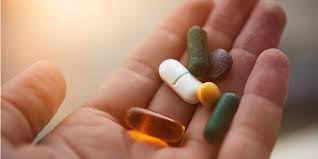The ADHD disorder that affects both children and adults is still poorly understood. ADHD Disorder is primarily a circumstantial disorder whose symptoms or expressions appear only in certain circumstances.
These circumstances vary from person to person:
- Some examples
- Stress
- Boredom
- Worry and Concerns About Anxiety
The main symptoms that accompany ADHD disorder are associated with a lack of inhibition in the pre-frontal cortex. They are expressed by:
- Distractibility
- Impulsiveness
- Motor hyperactivity
- Or psychic hyperactivity
- Anxiety
- Even depression
All of these symptoms may or may not combine, depending on the person.

The main consequences of ADHD are:
- Difficulty following a conversation
- Difficulty channeling thoughts
- Learning difficulties, especially school learning
- Behavioral difficulties
- Professional difficulties
- Poor self-esteem
- Lack of self-confidence
- Turbulent or in the moon
- Difficulties in social interaction
- Difficulty sleeping
What Are the Risks (Co-morbidities) Frequently Associated with an ADHD Disorder? Many wonder what other disorders one can encounter in association with ADHD. Below are some examples without the list being exhaustive:
Obesity due to an addiction to fat and/or sugar
- Asthma
- Allergy
- Diabetes
- Hypertension
- Sleeping troubles
- Psoriasis
- Epilepsy
- Sexually transmitted infections
- Visual disturbances
- Autoimmune disorders
Who is affected by ADHD disorder?
It is difficult to realize the extent of ADHD disorder in the population. Studies show that nearly 5% of children are affected by this type of disorder against 2.5% in adults and seniors, regardless of the country in the world.
Where does ADHD come from?
Specialists claim that heredity and therefore genetics would be the vector. Nearly 300 genes are said to be involved, with the levels of mutations of course extremely variable depending on the person and incredible complexity of which researchers are only at the beginning of a complete understanding. However, this genetic and hereditary component does not explain everything. It must be put in perspective with the combined environmental conditions (= epigenetics).
For example, the type of rigidified society we live in has a very significant influence on the very expression and intensity of the ADHD disorder. It is important to remember that this disorder should not be considered a disease since it is not. It is not an intrinsically pathological biological peculiarity. It is only used in certain specific circumstances, mentioned above.
It is the second most common disorder in psychiatry in children after anxiety/depression disorder.
Should we bet everything on the ADHD diagnosis?
Of course not. You have to keep reason and use common sense. Just because your child (or adult) ticks all the boxes in the ADHD diagnosis doesn’t mean it’s a problem. The problem only exists if there are negative and significant impacts on the life of the child or that of the adult as such!
Otherwise (= absence of suffering and handicaps), it is strictly unnecessary to shut yourself up in a psychiatric framework that does not correspond to your reality: you or your child are just the expressions of human neurodiversity.
What are the possible treatments?
As a first-line treatment, it is recommended to talk to your doctor. Some then suggest engaging in a psychoeducational approach to fully understand the patient’s mode of operation. This is valid for an adult as for a child. Parenting groups can also be an interesting solution, especially for toddlers between the ages of 3 and 6. It is then a question of sharing good practices and above all of better understanding what it is. This is all common sense because ADHD is not a disease as such!
Many psychiatrists consider that the drug approach remains to be favored in adolescents and adults, even before considering alternative solutions such as those described below.
What are the alternatives to drugs?
Here are some examples of interesting solutions for ADHD
Psychotherapy: CBT cognitive-behavioral therapies offer a solution to the problem identified. However, this solution does not solve the ADHD disorder but makes it possible to live with it better, by putting in place adapted strategies. Hypnosis, which requires that the patient is not only receptive but also concentrates (which may be complicated for ADHD!)
The psychoanalytic therapy: one seeks to identify the problem by trying to answer the question “Why”. For people with anxiety, answering this question may never stop ...
Should we be concerned about the ADHD drug approach?
It is important to know a little more about supplements for adhd to form your opinion. Products like anxiety medication, supplements for anxiety, brain supplements, natural mood stabilizers, serotonin supplements and dopamine supplements can play a major role in improving an ADHD patient. So far, SNAP has been known as the best ADHD drug you can get out there. Made from a purely natural substance that supplies the body with an adequate resource that would help combat ADHD and its symptoms. SNAP comes in 2 forms; the liquid and the capsule forms, and both are potent. One bottle or capsule of SNAP contains Vitamin b6, DMAE, Phosphatidylserine, Rhodiola, L-tyrosine, Nac and L-Taurine. How SNAP works is that the nutrients promote the brain to improve focus and concentration, as well as balance mood order and emotional stability.
Does ADHD Disorder Fade With Age?
How does ADHD generally progress with age in people who have it? Read further to find out.
Yes, ADHD usually gets better with age. Quite simply because the inhibition mechanisms increase with age. This does not happen without effort, however, which can lead some people to relapse into depression. In addition, adults have learned to know themselves better and have been able to put in place strategies that allow them to suffer less (= cognitive bias + implementation of concrete actions). This corresponds to a real development of its environment which becomes de facto more favorable.
 icons at the top right corner of the subsection.
icons at the top right corner of the subsection.